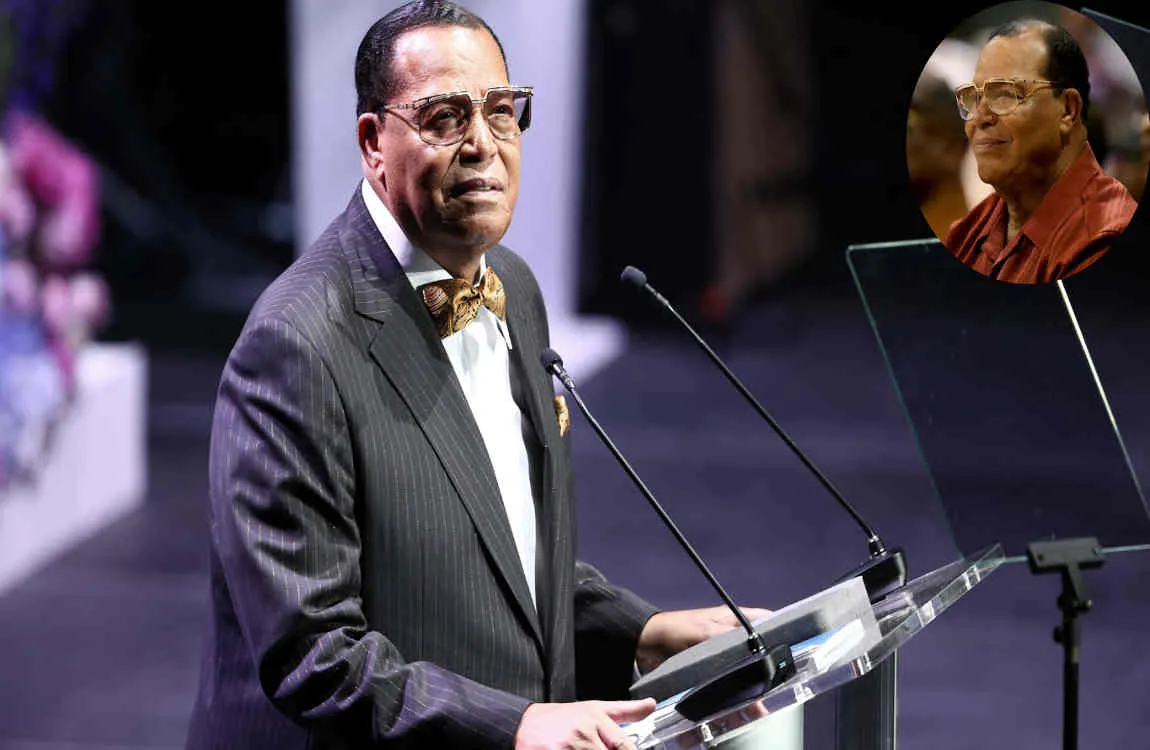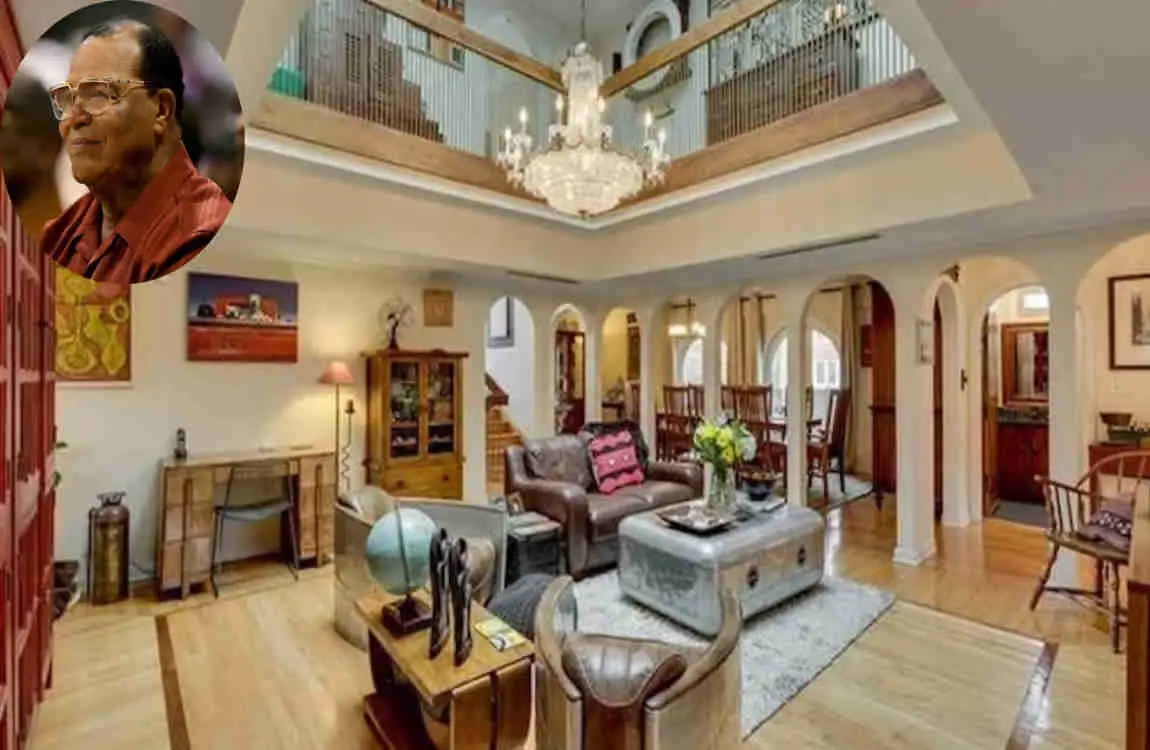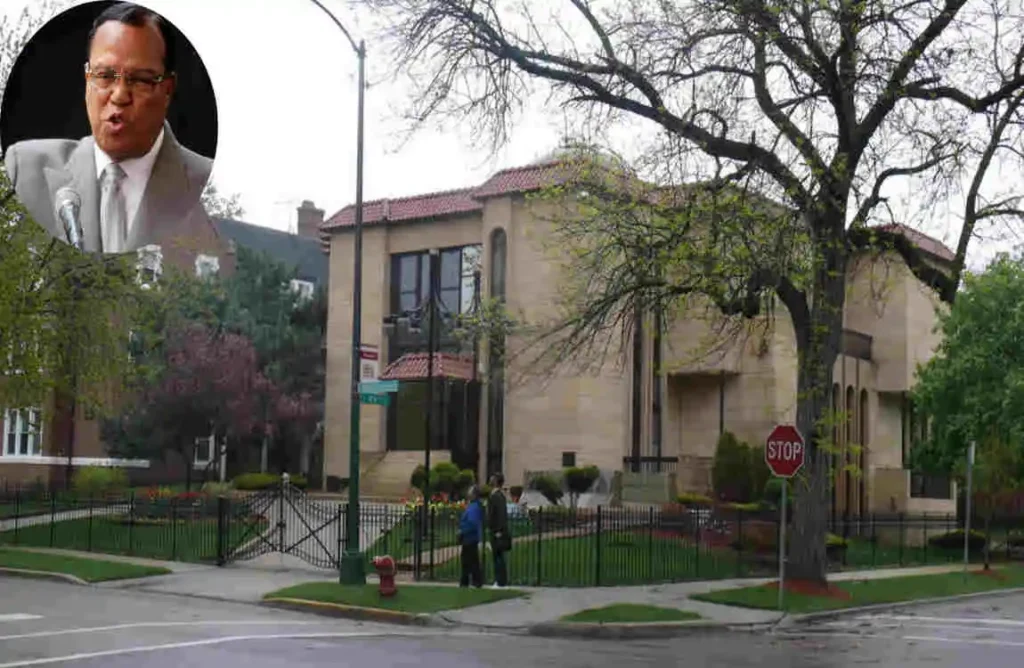Louis Farrakhan is a prominent yet controversial figure in both Chicago and the broader national landscape. As the leader of the Nation of Islam, he has had a profound impact on discussions surrounding race, religion, and activism. However, this influence comes with a considerable amount of controversy that often overshadows his contributions.
| Category | Information |
|---|---|
| Full Name | Louis Eugene Walcott (aka Louis Farrakhan, Louis X) |
| Date of Birth | May 11, 1933 |
| Place of Birth | Bronx, New York, USA |
| Profession | Religious leader (Leader of the Nation of Islam since 1981), former calypso singer |
| Family | Married to Khadijah (née Betsy Ross) since 1953; 9 children |
| Net Worth | Approximately $5 million |
| Notable Assets | Owns a large home in Chicago, Illinois, about 4,445 sq ft, valuated around $1.1 million |
| Residence | Chicago, Illinois (Lives in a North African-inspired mansion on Woodlawn Avenue) |
Understanding these controversies isn’t just for academics or political enthusiasts; it’s relevant for anyone interested in the complex interplay between influential figures and their communities.
Who is Louis Farrakhan?

Short Biography
Louis Farrakhan was born on May 11, 1933, and has been a pivotal figure in the Nation of Islam since the 1970s. He became the national spokesman for the organization in 1977 and has since been known for his charismatic leadership and eloquent speaking style. His influence extends beyond religious circles, impacting social and political discourse, particularly regarding issues affecting African Americans.
Public Image and Controversies
Farrakhan’s public image is polarizing. Supporters view him as a champion of black nationalism and social justice, while critics often label him as a figure of anti-Semitism and hate speech. His speeches frequently invoke themes of racial pride and empowerment, but are also criticized for harboring divisive rhetoric.
This dichotomy is essential for understanding the controversies surrounding his residence in Chicago. The house serves as more than just a physical space; it embodies the broader ideological conflicts that Farrakhan represents.
Location and Description of Louis Farrakhan’s House in Chicago
Physical Location
You may also read (inside mark wahlbergs luxurious home a visual tour).
| Feature | Details |
|---|---|
| Owner | Louis Farrakhan |
| Location/Address | Woodlawn Avenue, Chicago, Illinois, 60615 |
| Price/Worth | Purchased for approximately $1.1 million (estimated value linked to this property) |
| Size | About 4,445 square feet |
| Bedrooms | 5 |
| Bathrooms | 5 |
| Architectural Design | Inspired by North African architecture with a blend of modern design; features include: |
| – Tall ceilings and arched doors giving a royal, mesmerizing look | |
| – Multiple windows and an atrium with a skylight for natural light flow | |
| – Wood prominently used inside for a rustic theme | |
| – Exterior has a vintage and countryside feel | |
| The house was designed by Dr. Mostafa Momen, an Egyptian architect | |
| Historical Info | – Originally built in the 1970s by Elijah Muhammad |
| – Part of a set of houses on Woodlawn Ave designed for Nation of Islam leaders and family members | |
| – Serves as a significant residence linked to the Nation of Islam and Farrakhan’s leadership | |
| – The home is spacious to accommodate Farrakhan’s large family | |
| Additional Notes | – The house offers stunning neighborhood views |
| – Reflects Farrakhan’s blend of tradition and style | |
| – Farrakhan’s net worth is estimated around $5 million, placing this property within his portfolio |
Farrakhan’s residence is located in the South Side of Chicago, an area rich in history and cultural significance. This neighborhood has been a focal point for African American activism and culture, making it a fitting backdrop for Farrakhan’s residence.
Property Details
The house itself is an expansive property, offering ample space for gatherings and meetings. While specific details about the square footage or architectural style may vary, it is essential to note that the house functions as a symbolic home base for Farrakhan’s activities and the Nation of Islam.
Symbolic Role
Farrakhan’s Chicago residence is not just a physical structure but a symbol of his influence within the community. It has hosted numerous events, meetings, and speeches that reinforce his position as a leader in the Nation of Islam, thereby adding to its significance.
Historical Background of the House and Its Significance

Acquisition of the House
Farrakhan acquired his Chicago home in the late 1980s. The property has a history that predates his ownership, having belonged to various notable figures over the years. This historical context adds layers to its current significance.
Notable Events
Over the years, the house has been the site of numerous controversial events. From community meetings to speeches addressing social issues, the residence has served as a backdrop for Farrakhan’s activism. These events often attract media attention and public scrutiny, further entrenching the house in the fabric of Chicago’s socio-political landscape.
Symbol of Larger Conflicts
The house stands as a symbol of larger ideological and social conflicts. It represents not only Farrakhan’s individual beliefs but also embodies the struggles and aspirations of many within the African American community. This duality makes it a focal point for discussions around race and activism in Chicago.
Controversies Surrounding Louis Farrakhan’s House
Overview of Public Controversies
Farrakhan’s residence has been at the center of numerous public controversies. From protests organized by various groups to media coverage that often sensationalizes his actions, the house has become a site of contention.
Specific Incidents
One notable incident involved protests by Jewish organizations, which voiced concerns over Farrakhan’s rhetoric. These events often gather significant media attention and fuel ongoing debates about his influence and the implications of his speech.
Criticisms and Support
Critics of Farrakhan, including civil rights groups and political figures, argue that his residence symbolizes a dangerous ideology that perpetuates division and hate. Conversely, supporters say that Farrakhan provides a necessary voice for marginalized communities, defending his right to reside in a neighborhood that has long supported him.
Community Impact
The controversies surrounding Farrakhan’s house have tangible effects on the local community. Tensions often escalate, affecting the dynamics and relationships within neighborhoods. Understanding these impacts is crucial for grasping the complexities of urban life in Chicago.
Anti-Semitism and Other Accusations Linked to Farrakhan
Summary of Accusations
Farrakhan has faced numerous accusations of anti-Semitism and hate speech throughout his career. His speeches often reference Jewish people in a negative light, leading to widespread condemnation. This rhetoric plays a significant role in how his Chicago residence is perceived.
Public Perception
The accusations against Farrakhan extend to perceptions of his Chicago home. Many view the house as a symbol of hate, while others argue that it represents a space for dialogue and activism. This dichotomy creates a complex narrative that is difficult to navigate.
Responses from Organizations
Jewish organizations and civil rights groups in Chicago have condemned Farrakhan’s remarks, expressing concerns about their implications for community relations. This ongoing discourse underscores the importance of dialogue and understanding in addressing these sensitive issues.
Impact on Public Discourse
Farrakhan’s rhetoric has significantly influenced public and political discourse, particularly concerning his property. The controversies surrounding his house often reflect broader societal debates about race, religion, and freedom of speech.
Media Coverage and Public Perception of the House Controversy
Local and National Media Coverage
The media plays a crucial role in shaping public perception of Farrakhan’s house and the controversies surrounding it. Local news outlets often cover protests and community reactions, while national media may delve into his ideological beliefs and their implications.
Influence of Social Media
Social media has amplified discussions around Farrakhan, allowing for a broader range of opinions and debates. This platform enables supporters and critics to voice their perspectives, often leading to heated exchanges.
You may also read (inside the lavish world of bad bunnys house).
Major News Stories
Several major news stories have reported on events associated with Farrakhan’s house, including protests and community meetings. These stories contribute to the ongoing narrative surrounding his influence and the implications of his residence.
Civic and Religious Leadership
Chicago’s civic and religious leaders play a significant role in framing the controversy. Their statements and actions can either escalate tensions or promote dialogue, highlighting the importance of community leadership in navigating these complex issues.
Legal and Political Implications
Legal Challenges
Farrakhan’s residence has not been without legal challenges. Various city ordinances and regulations may affect how the property is used, particularly concerning public gatherings and events.
Political Reactions
Political reactions from Chicago city officials and Illinois state politicians have varied. Some support Farrakhan’s right to reside where he chooses, while others call for a reevaluation of his influence in the community.
Public Safety Concerns
Public safety is a significant concern in the ongoing discourse about Farrakhan’s house. Law enforcement involvement often becomes necessary during protests or community events, raising questions about the balance between free speech and public order.
Broader Implications
The controversies surrounding Farrakhan’s residence have broader implications for free speech, community relations, and urban policy in Chicago. Understanding these dynamics is crucial for navigating the complexities of activism in urban settings.
Economic and Real Estate Perspectives
Impact on Property Values
The controversies surrounding Farrakhan’s house have tangible effects on property values and neighborhood dynamics. Some residents may feel deterred from investing in the area due to its association with Farrakhan, while others may see it as an opportunity.
Real Estate Insights
Owning a high-profile, controversial property in Chicago presents unique challenges and opportunities. Understanding the local real estate market and community sentiment is essential for navigating these dynamics effectively.
Implications for Businesses
Local businesses may also feel the impact of the controversies surrounding Farrakhan’s house. Community sentiment can significantly influence customer perceptions and purchasing decisions, making it essential for companies to carefully navigate these issues.
Broader Social and Cultural Impact
Reflection of Societal Debates
The house controversy reflects larger societal debates around race, religion, and activism in Chicago. It serves as a microcosm of the struggles and aspirations of many within the African American community.
Role of Symbolic Homes
Symbolic homes, like Farrakhan’s residence, play a significant role in political and cultural movements. They serve as focal points for activism and discussion, highlighting the importance of place in shaping social narratives.
Nation of Islam’s Role
Farrakhan’s house helps illustrate the Nation of Islam’s role in Chicago’s social fabric. Understanding this influence is essential for grasping the complexities of activism and community dynamics in the city.
Current Status and Future Outlook
Current Ownership
Currently, Farrakhan resides in his home in Chicago. The property remains a focal point for ongoing discussions about his influence and the controversies surrounding his actions.
Recent Developments
There have been recent developments related to Farrakhan and his residence, though specifics may vary. Staying informed about these changes is crucial for understanding the evolving narrative.
Predictions for the Future
Experts predict that the future of Farrakhan’s house will be shaped by ongoing controversies and the evolving dynamics of the community. As discussions around race and activism continue, the residence will likely remain a central point of focus in Chicago’s socio-political landscape.
Where Does Louis Farrakhan Currently Live?
Louis Farrakhan currently lives in Kenwood, Chicago. This has been reported in multiple sources, including Simple English Wikipedia, which states he now lives in Kenwood, Chicago.
You may also read (inside the world of huge celebrity houses).
